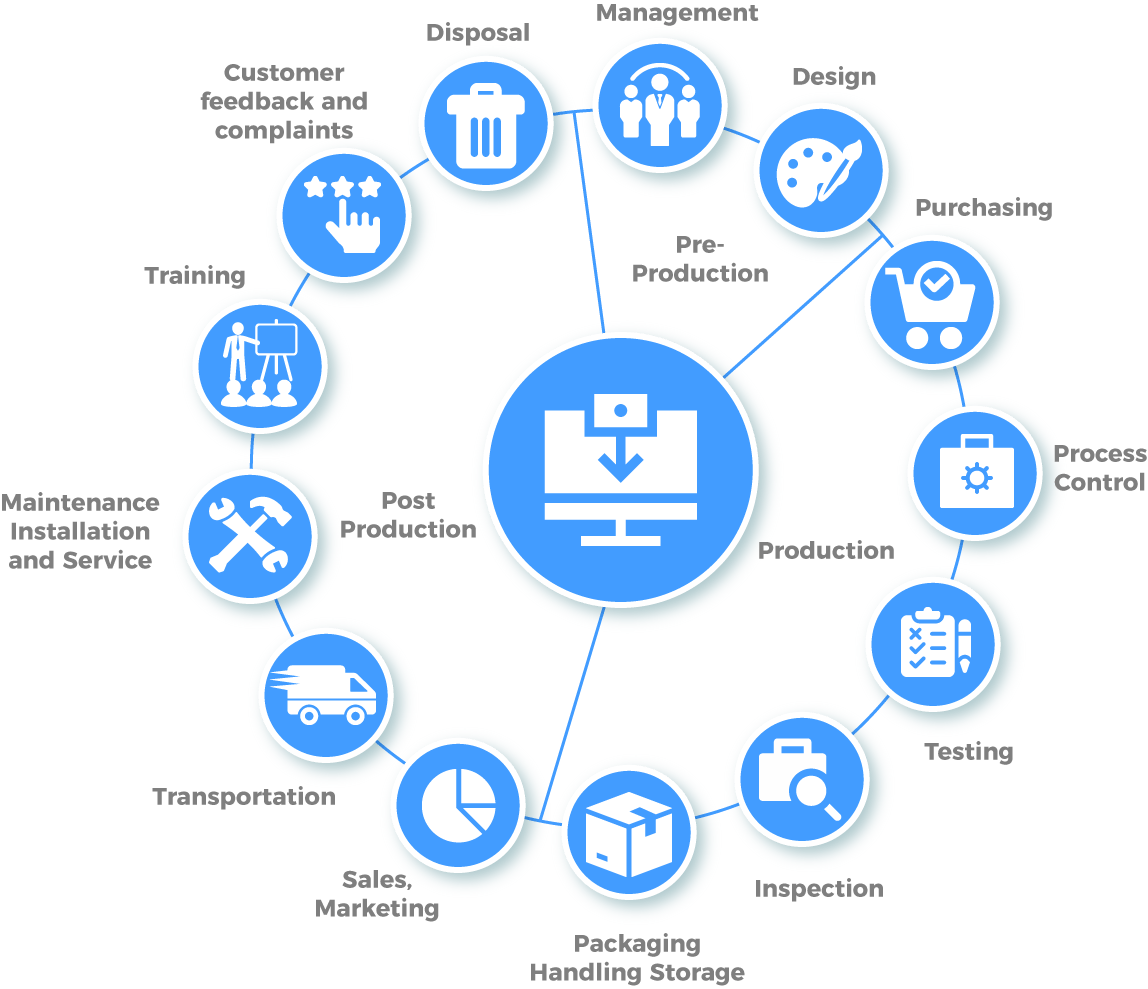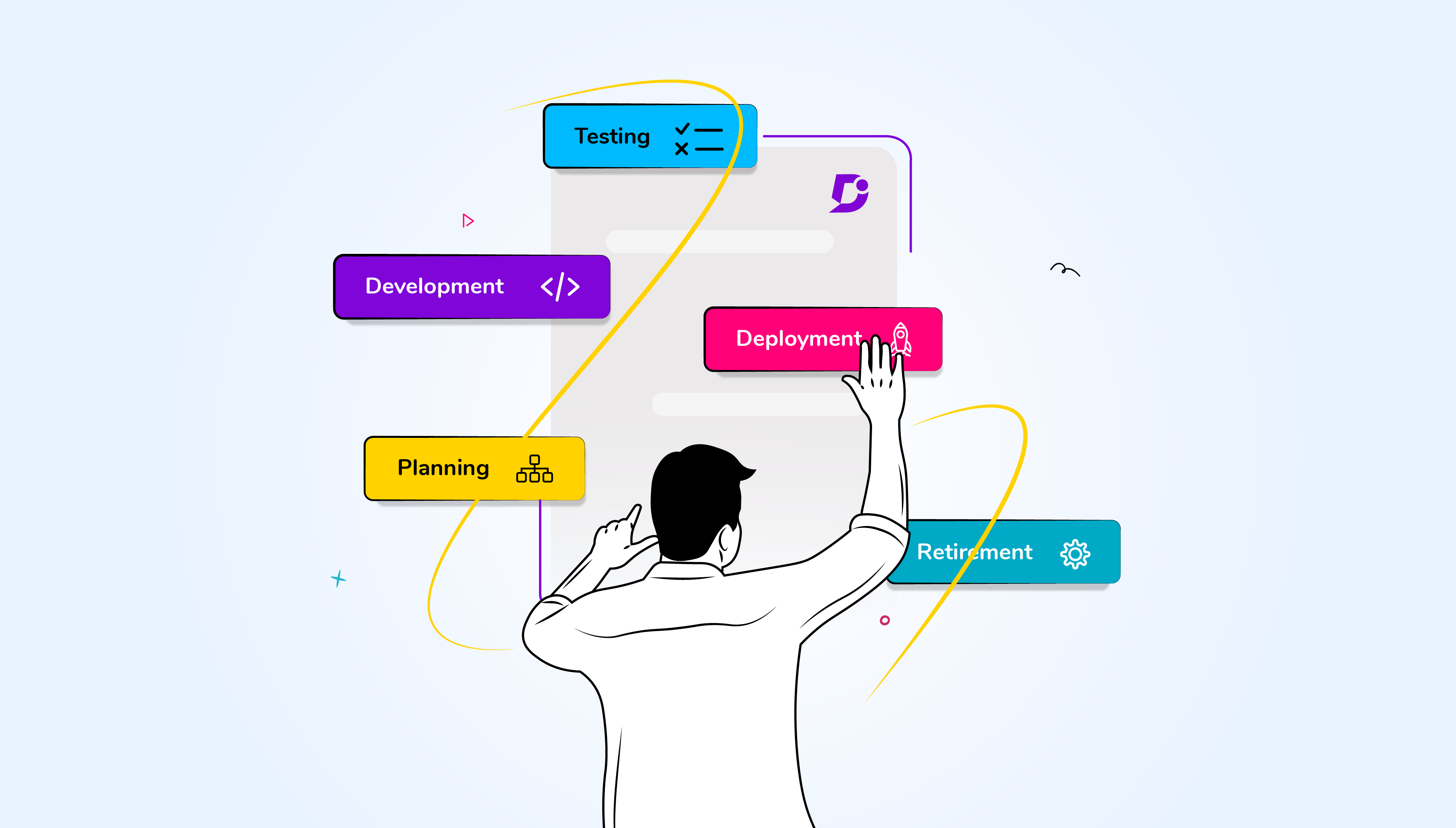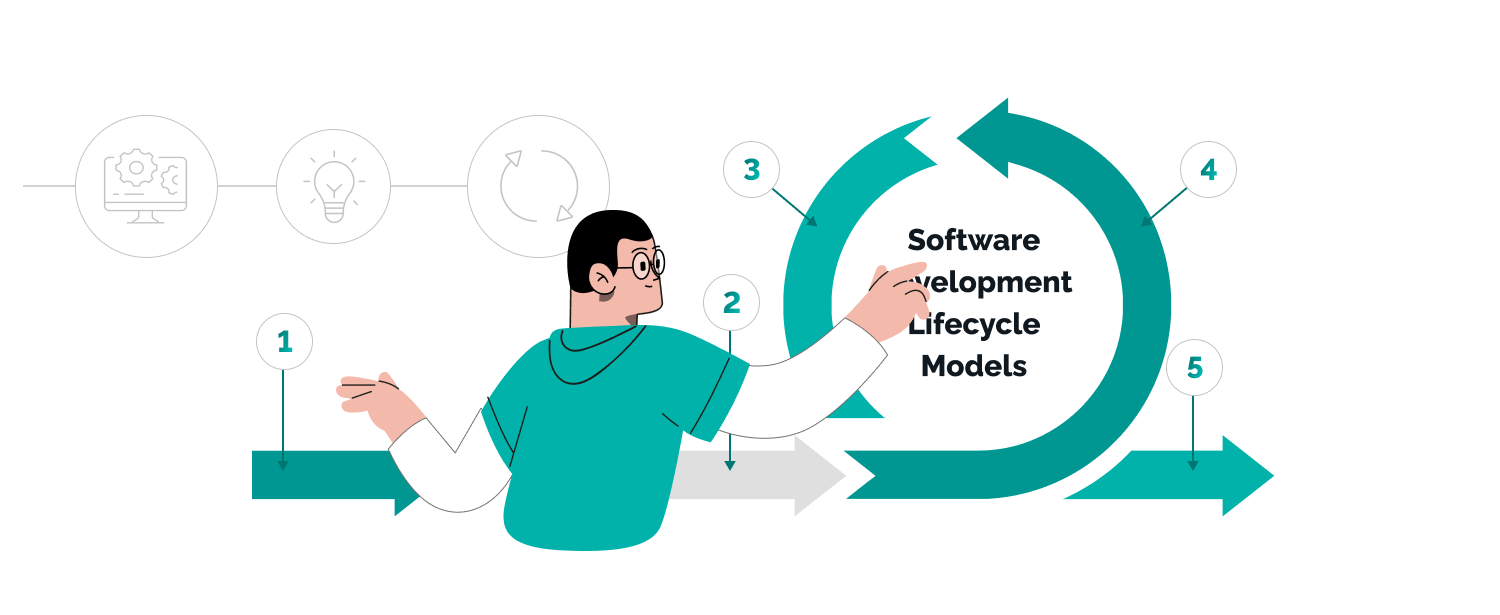“The Software Lifecycle: A Comprehensive Guide to Building and Maintaining Software
Artikel Terkait The Software Lifecycle: A Comprehensive Guide to Building and Maintaining Software
- The Rise Of Specialized Silicon: Exploring The Landscape Of AI Hardware
- Ambient Intelligence: Weaving Technology Seamlessly Into The Fabric Of Our Lives
- Context-Aware Computing: Weaving Technology Into The Fabric Of Our Lives
- Quality Assurance: The Cornerstone Of Excellence In A World Of Ever-Evolving Standards
- The Rise Of The Edge: Exploring The Power Of On-Device Machine Learning
Table of Content
Video tentang The Software Lifecycle: A Comprehensive Guide to Building and Maintaining Software
The Software Lifecycle: A Comprehensive Guide to Building and Maintaining Software

The software lifecycle, also known as the Software Development Life Cycle (SDLC), is a structured process outlining the steps involved in creating, deploying, and maintaining software. It’s a systematic approach designed to ensure the development of high-quality software that meets user needs, stays within budget, and is delivered on time. Understanding the SDLC is crucial for anyone involved in software development, from developers and testers to project managers and stakeholders.
This article will delve into the various stages of the software lifecycle, explore different SDLC models, and discuss the importance of each phase. We’ll also cover frequently asked questions and provide a concluding summary of the key takeaways.
The Stages of the Software Lifecycle:
While specific methodologies may vary, the core stages of the software lifecycle generally include the following:
1. Planning and Requirements Gathering:
This initial stage is arguably the most critical. It involves defining the project’s scope, objectives, and target audience. A clear understanding of the problem the software aims to solve is paramount. This stage also involves:
- Identifying Stakeholders: Determining who will use the software and understanding their needs and expectations.
- Gathering Requirements: Collecting detailed information about the functionality, features, and performance of the software. This can be done through interviews, surveys, workshops, and document analysis.
- Feasibility Study: Assessing the technical, economic, and operational feasibility of the project. This includes evaluating available resources, potential risks, and the return on investment (ROI).
- Defining Scope: Clearly outlining the boundaries of the project, defining what will be included and excluded. This prevents scope creep and ensures the project stays focused.
- Creating a Project Plan: Developing a detailed roadmap that outlines tasks, timelines, resources, and milestones.

2. Analysis:
Once the requirements are gathered, the analysis phase focuses on understanding and documenting them in detail. This involves:

- Analyzing Requirements: Examining the gathered requirements to identify inconsistencies, ambiguities, and potential conflicts.
- Creating Use Cases: Describing how users will interact with the software to achieve specific goals.
- Developing System Models: Creating diagrams and models that represent the system’s architecture, data flow, and interactions. Examples include UML diagrams (Unified Modeling Language) and data flow diagrams (DFDs).
- Prioritizing Requirements: Ranking requirements based on their importance and urgency. This helps in focusing development efforts on the most critical features first.
- Creating a Requirements Specification Document: A comprehensive document that formally defines all the requirements for the software. This document serves as the foundation for subsequent stages.

3. Design:
The design phase translates the requirements into a blueprint for the software. This involves:
- Architectural Design: Defining the overall structure and organization of the software system. This includes choosing the appropriate architectural style (e.g., microservices, layered architecture), selecting technologies, and defining the interfaces between different components.
- Database Design: Designing the database schema, including tables, relationships, and data types.
- User Interface (UI) Design: Creating mockups and prototypes of the user interface, focusing on usability and user experience.
- Detailed Design: Specifying the internal workings of each component, including algorithms, data structures, and interfaces.
- Security Design: Incorporating security considerations into the design to protect the software from vulnerabilities and threats.
- Creating a Design Document: A comprehensive document that describes the architecture, database, UI, and detailed design of the software.
4. Implementation (Coding):
This is the stage where the actual coding takes place, bringing the design to life. This involves:
- Writing Code: Translating the design specifications into executable code using the chosen programming languages and tools.
- Code Reviews: Having other developers review the code to identify potential errors, improve code quality, and ensure adherence to coding standards.
- Unit Testing: Testing individual components of the software to ensure they function correctly in isolation.
- Integration: Combining the different components of the software and testing them together to ensure they work seamlessly.
- Configuration Management: Managing the different versions of the code and other artifacts to ensure consistency and traceability.
5. Testing:
The testing phase is crucial for identifying and fixing defects in the software before it is released to users. This involves:
- System Testing: Testing the entire software system to ensure it meets the specified requirements.
- Integration Testing: Testing the interactions between different components of the software.
- User Acceptance Testing (UAT): Allowing end-users to test the software and provide feedback on its usability and functionality.
- Performance Testing: Evaluating the software’s performance under different loads and conditions.
- Security Testing: Identifying and addressing security vulnerabilities in the software.
- Regression Testing: Retesting the software after changes have been made to ensure that existing functionality has not been broken.
- Bug Reporting: Documenting and tracking all identified defects.
6. Deployment:
This stage involves making the software available to users. This involves:
- Planning the Deployment: Developing a detailed plan for deploying the software to the production environment.
- Setting up the Environment: Configuring the servers, networks, and other infrastructure required to run the software.
- Installing the Software: Deploying the software to the production environment.
- Data Migration: Migrating data from the old system to the new system.
- User Training: Providing training to users on how to use the new software.
- Monitoring: Monitoring the software’s performance and stability after deployment.
7. Maintenance:
The maintenance phase involves providing ongoing support and updates to the software after it has been deployed. This involves:
- Bug Fixing: Addressing any defects that are discovered after deployment.
- Enhancements: Adding new features and functionality to the software.
- Performance Optimization: Improving the software’s performance and scalability.
- Security Updates: Applying security patches to protect the software from vulnerabilities.
- Technical Support: Providing assistance to users who are experiencing problems with the software.
- Decommissioning: Eventually, the software may be retired and decommissioned.
SDLC Models:
Different SDLC models provide frameworks for managing the software lifecycle. Each model has its strengths and weaknesses, and the choice of model depends on the specific project requirements and constraints. Some popular SDLC models include:
- Waterfall Model: A sequential model where each phase is completed before the next one begins. It’s simple to understand and implement but can be inflexible and difficult to adapt to changing requirements.
- Iterative Model: A model where the software is developed in iterations, with each iteration building upon the previous one. It allows for early feedback and adaptation to changing requirements.
- Spiral Model: A risk-driven model that combines elements of the waterfall and iterative models. It’s suitable for complex projects with high risk.
- Agile Model: A flexible and iterative model that emphasizes collaboration, customer feedback, and rapid development. Popular agile methodologies include Scrum and Kanban.
- V-Model: Emphasizes verification and validation at each stage of development. It is a more structured approach than agile but less flexible than waterfall.
Importance of the Software Lifecycle:
The software lifecycle is essential for several reasons:
- Improved Quality: Provides a structured approach to development, leading to higher-quality software.
- Reduced Costs: Helps to identify and fix defects early in the development process, reducing the cost of rework.
- Faster Delivery: Facilitates better planning and execution, leading to faster delivery of the software.
- Increased Customer Satisfaction: Ensures that the software meets user needs and expectations, leading to increased customer satisfaction.
- Better Risk Management: Helps to identify and mitigate potential risks early in the development process.
- Enhanced Communication: Provides a common framework for communication and collaboration among stakeholders.
- Improved Maintainability: Makes the software easier to maintain and update over time.
FAQ:
Q: What is the most important stage of the SDLC?
A: While all stages are important, the planning and requirements gathering stage is arguably the most critical. A clear understanding of the requirements is essential for building software that meets user needs and achieves its objectives.
Q: Which SDLC model is the best?
A: There is no single "best" SDLC model. The choice of model depends on the specific project requirements, constraints, and organizational culture.
Q: What are the benefits of using an agile methodology?
A: Agile methodologies offer several benefits, including increased flexibility, faster delivery, improved collaboration, and enhanced customer satisfaction.
Q: What is the role of testing in the SDLC?
A: Testing is a crucial stage in the SDLC that ensures the software meets the specified requirements and is free from defects.
Q: How can I improve the efficiency of the SDLC process?
A: You can improve the efficiency of the SDLC process by using appropriate tools and techniques, fostering collaboration among stakeholders, and continuously monitoring and improving the process.
Q: What happens if we skip a stage in the SDLC?
A: Skipping a stage can lead to significant problems later in the development process, such as defects, delays, and increased costs. It’s crucial to follow all stages of the SDLC to ensure the successful development of the software.
Q: How does DevOps relate to the SDLC?
A: DevOps is a set of practices that aims to automate and integrate the processes between software development and IT teams. It essentially streamlines the SDLC, focusing on continuous integration, continuous delivery, and continuous deployment, leading to faster release cycles and improved collaboration.
Q: What are some common challenges in the SDLC?
A: Common challenges include changing requirements, scope creep, communication breakdowns, and lack of resources.
Q: How can we manage changing requirements during the SDLC?
A: Using an agile methodology or iterative model can help manage changing requirements. It’s also important to have a clear change management process in place.
Q: What are the key performance indicators (KPIs) for the SDLC?
A: Key performance indicators (KPIs) for the SDLC can include project completion time, budget adherence, defect density, customer satisfaction, and team velocity.
Conclusion:
The software lifecycle is a fundamental framework for developing and maintaining high-quality software. By understanding the different stages, models, and importance of each phase, developers, project managers, and stakeholders can work together to create software that meets user needs, stays within budget, and is delivered on time. Choosing the right SDLC model and continuously improving the process are crucial for achieving success in software development. In a rapidly evolving technological landscape, a well-defined and adaptable software lifecycle is more critical than ever.
